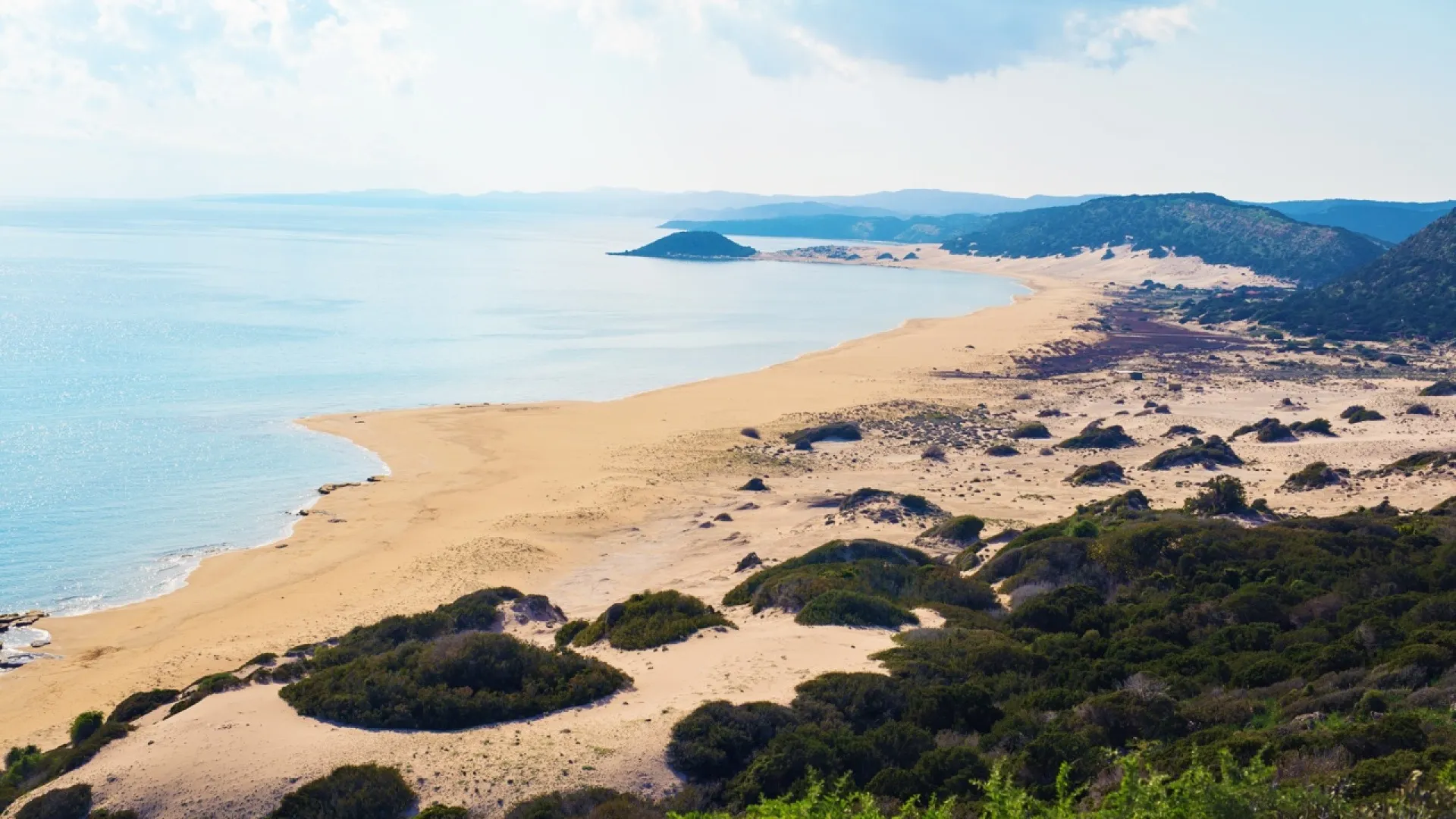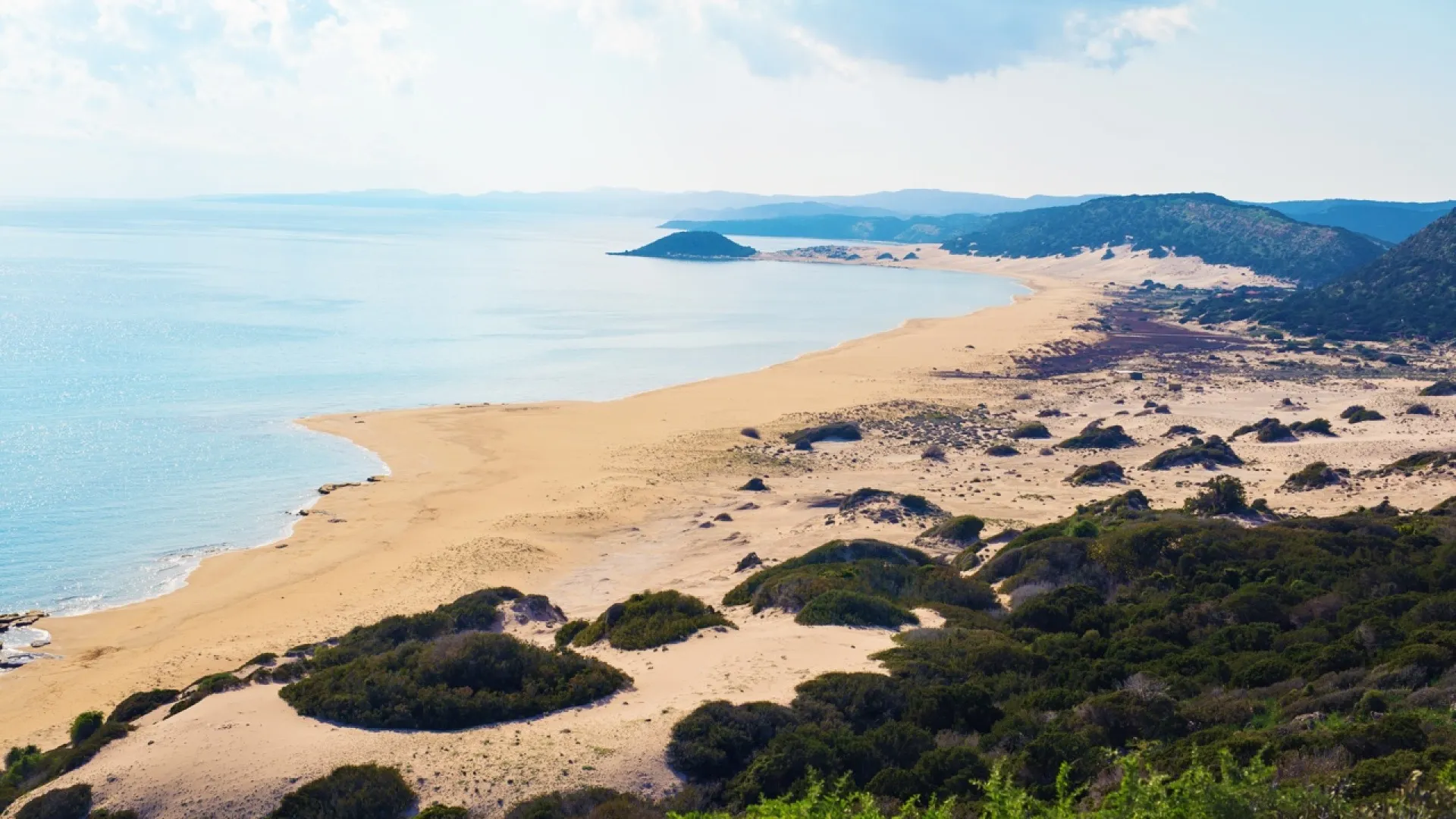




The cold, dark winter months in Germany can not only affect your mood but also aggravate health issues. No wonder that more and more retirees and active seniors are escaping the domestic winter and opting for wintering in the south. But which regions are particularly suitable, and where can you winter affordably in the south? This article provides a comprehensive overview of the most popular winter domiciles in Southern Europe and reveals why Cyprus is increasingly becoming an insider tip for long-term vacationers.
The advantages of a winter stay in warmer climes are obvious:
Those interested in wintering in Southern Europe have various options. Here's an overview of the most popular destinations and their respective advantages and disadvantages:
Most popular regions: Costa del Sol, Costa Blanca, Canary Islands
Advantages:
Disadvantages:
Most popular regions: Algarve, Lisbon area, Madeira
Advantages:
Disadvantages:
Most popular regions: Sicily, Apulia, Liguria
Advantages:
Disadvantages:
Most popular regions: Turkish Riviera (Antalya, Alanya)
Advantages:
Disadvantages:
The costs for affordable wintering in the south vary depending on the country, region, and personal requirements. Here's a rough overview of monthly costs for two people (excluding travel):
| Country | Accommodation | Food | Utilities | Leisure | Total per Month |
|---|---|---|---|---|---|
| Spain | 800-1,500 € | 500-700 € | 150-250 € | 200-400 € | 1,650-2,850 € |
| Portugal | 700-1,300 € | 450-650 € | 130-230 € | 200-350 € | 1,480-2,530 € |
| Italy | 900-1,700 € | 550-750 € | 180-280 € | 250-450 € | 1,880-3,180 € |
| Turkey | 500-1,100 € | 350-550 € | 100-200 € | 150-300 € | 1,100-2,150 € |
These costs can be further reduced by choosing the off-season, longer rental contracts, or taking advantage of special offers. In addition, many hotels and resorts offer special long-term packages for winter visitors.
While the countries mentioned above have been classics for wintering in Southern Europe for years, Cyprus has developed into a real insider tip in recent years. The third-largest Mediterranean island offers a unique combination of advantages that make it particularly attractive for long-term vacationers.
With around 300 sunny days per year, Cyprus is one of the sunniest regions in Europe. Even in the winter months, average temperatures remain at a pleasant 16-20°C. Water temperatures rarely fall below 16°C, making even occasional swimming in winter possible. With these figures, Cyprus even surpasses popular winter destinations such as the Costa del Sol or the Algarve.
Cyprus looks back on a 10,000-year history and offers a fascinating mix of different cultural influences. From ancient Greek and Roman ruins to Byzantine churches to Venetian fortresses and Ottoman mosques – the island is a paradise for culture enthusiasts. This cultural diversity ensures that even during a longer stay, there's no chance of boredom.
A special feature of Cyprus is its division into a Greek-influenced south (Republic of Cyprus) and a Turkish-influenced north (Northern Cyprus). This situation, which might initially appear as a disadvantage, proves to be a real advantage for winter visitors – provided one chooses the right provider.
The northern part of Cyprus offers significantly lower prices for accommodations and living costs than the south. Here, vacationers find:
The southern part scores with:
The key to affordable wintering in the south lies in the clever combination of both parts of the island. While other providers often limit themselves to one part of the island, there are innovative concepts that unite the best of both worlds:
This combination makes it possible to winter at significantly lower prices than in classic destinations such as Spain or Italy, without having to sacrifice comfort and experiences.
In direct comparison with other popular destinations for wintering in the south, Cyprus offers some unique advantages:
The eastern location in the Mediterranean ensures milder winters and more sunny days than in Spain or Portugal. While the Costa del Sol can experience rainy days in winter, Cyprus mostly remains sunny and dry.
With an area of only about 9,250 km², Cyprus is significantly more compact than Spain or Italy. This means that all attractions and excursion destinations are reachable within a maximum of 2-3 hours – ideal for day trips without long, tiring journeys.
Compared to the overcrowded regions on the Costa del Sol or the Canary Islands, Cyprus, especially Northern Cyprus, is still a real insider tip. Here, one can find authentic places without mass tourism and enjoy Mediterranean life in peace.
Thanks to its geographical location, Cyprus offers the unique opportunity to visit destinations such as Egypt (Cairo/Pyramids), Israel (Jerusalem), Lebanon, or Greece via short flights or boat trips – an advantage that winter domiciles located further west cannot offer.
Due to Cyprus's British past, English is widely spoken throughout the island, often making communication easier for German tourists than in other Southern European countries. In Northern Cyprus, Turkish speakers or those experienced with Turkey also benefit from the language similarity.
For retirees and active seniors who want to winter in the south uncomplicated and with planning security, special all-inclusive packages are available. These typically include:
The minimum stay duration for such packages is usually 28 days, but longer stays of two or three months are also possible. Prices start at about 3,445 euros per person for a 30-day stay including numerous excursions – a value for money that classic winter destinations can hardly offer.
A special advantage of some providers are the included excursions to neighboring countries. For example, from Cyprus, one can take a day trip or short trip to Cairo to visit the pyramids. Such excursions, which would cost several hundred euros if booked independently, are already included in some all-inclusive packages – a significant added value.
Those who decide to winter in Southern Europe in Cyprus should consider the following tips:
The ideal time for wintering in Cyprus is from October to May. During this period, pleasant temperatures between 16 and 25°C prevail, ideal for outdoor activities. The months from November to March are particularly popular, when winter reigns in Germany, while it's often still t-shirt weather in Cyprus.
The easiest way to reach Cyprus is by plane. International airports are located in Larnaca and Paphos in the south and in Ercan in the north. Direct flights from Germany primarily go to Larnaca and Paphos, from where transfers to the north can be organized. The flight time from Germany is about 3.5 to 4 hours.
The following entry requirements apply to German citizens:
For stays over 90 days, additional permits are required in both parts of the island.
Medical care in Cyprus is good, especially in the south, where it meets EU standards. Important for winter visitors:
Cyprus is increasingly developing from an insider tip to a favorite for Germans looking to escape winter. With its excellent climate, rich culture, and especially the unique combination of affordable Northern Cyprus and diverse Southern Cyprus, the island offers ideal conditions for an extended winter stay.
Particularly attractive are all-inclusive packages that combine accommodation in Northern Cyprus with excursions throughout the entire island and even to neighboring countries. These offers enable affordable wintering in the south without having to sacrifice comfort, experiences, or security.
While Spain, Portugal, and Italy remain popular classics, Cyprus offers a convincing alternative with better climate, lower prices, and less mass tourism. Those who have spent one winter on this fascinating Mediterranean island often return as regular guests – a clear sign of the quality of this emerging winter domicile.
Would you like to learn more about the possibilities of a winter stay in Cyprus? In our free report "Wintering in the South: The Ultimate Cyprus Guide for Retirees and Active Seniors," you'll find all the important information:
We use necessary cookies including analytics to ensure our website works properly and to understand how to improve your experience. By continuing to browse, you accept our use of necessary cookies. Click "Accept All" for personalized content and offers.